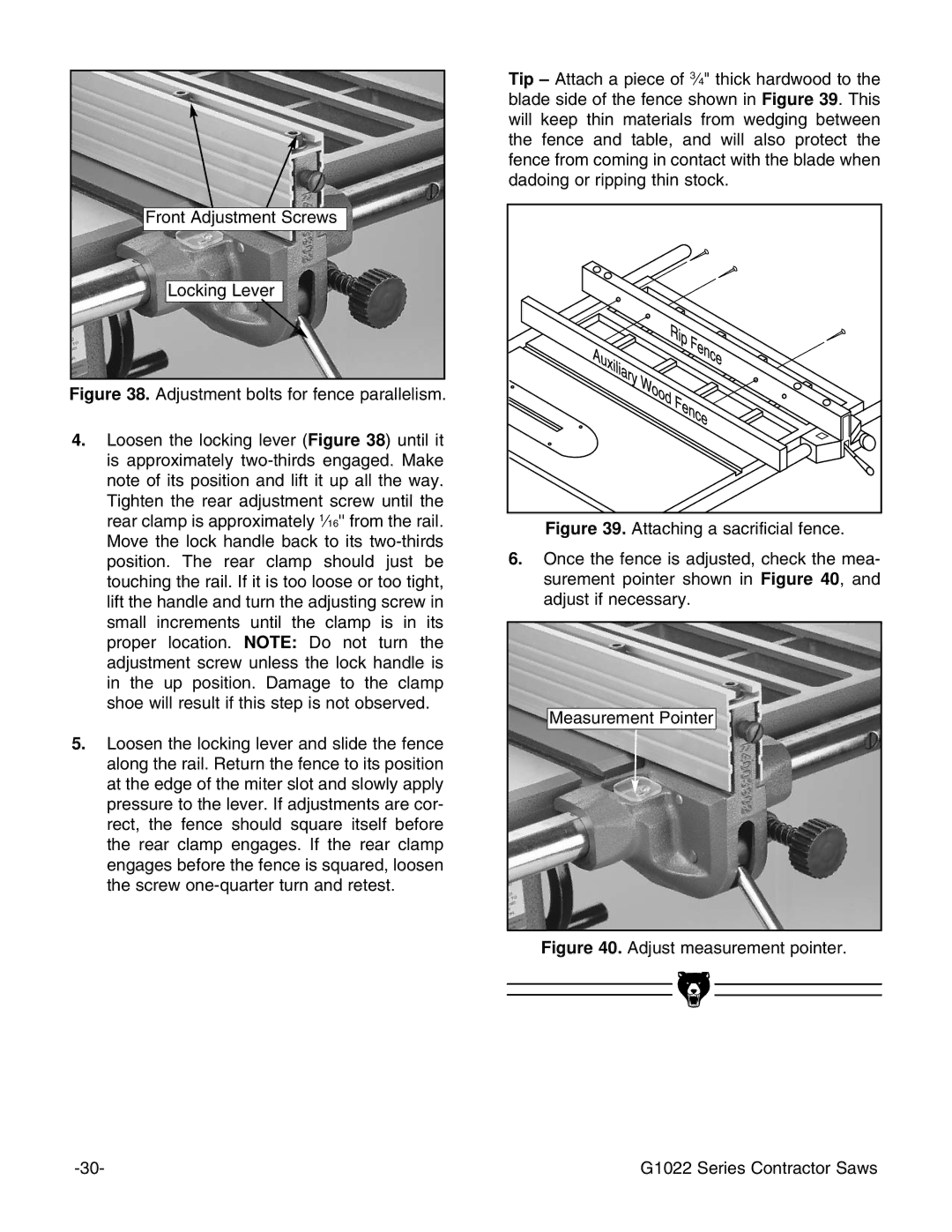
Front Adjustment Screws
Locking Lever
Figure 38. Adjustment bolts for fence parallelism.
4.Loosen the locking lever (Figure 38) until it is approximately two-thirds engaged. Make note of its position and lift it up all the way. Tighten the rear adjustment screw until the rear clamp is approximately 1Ú16'' from the rail. Move the lock handle back to its two-thirds position. The rear clamp should just be touching the rail. If it is too loose or too tight, lift the handle and turn the adjusting screw in small increments until the clamp is in its proper location. NOTE: Do not turn the adjustment screw unless the lock handle is in the up position. Damage to the clamp shoe will result if this step is not observed.
5.Loosen the locking lever and slide the fence along the rail. Return the fence to its position at the edge of the miter slot and slowly apply pressure to the lever. If adjustments are cor- rect, the fence should square itself before the rear clamp engages. If the rear clamp engages before the fence is squared, loosen the screw one-quarter turn and retest.
Tip – Attach a piece of 3Ú4" thick hardwood to the blade side of the fence shown in Figure 39. This will keep thin materials from wedging between the fence and table, and will also protect the fence from coming in contact with the blade when dadoing or ripping thin stock.
Figure 39. Attaching a sacrificial fence.
6.Once the fence is adjusted, check the mea- surement pointer shown in Figure 40, and adjust if necessary.
Measurement Pointer
Figure 40. Adjust measurement pointer.
|
|
|
|
|
|
|
|
|
|
|
|
G1022 Series Contractor Saws | |||
